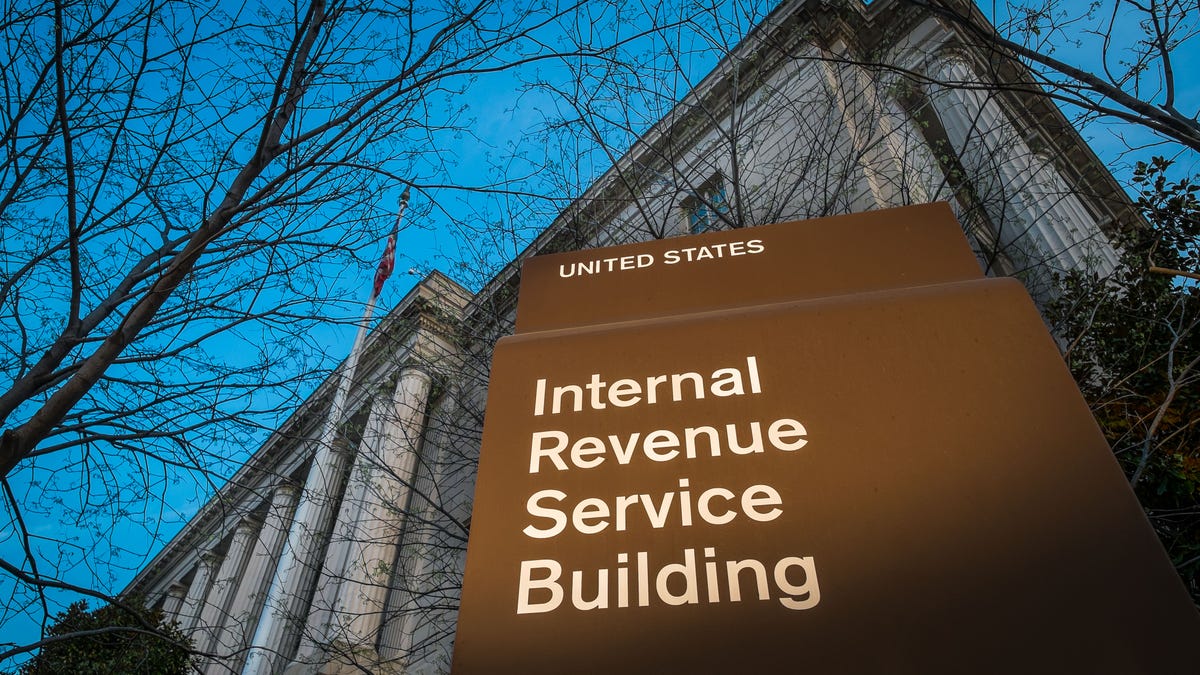
April 13, 2014: The headquarters of the Internal Revenue Service (IRS) in Washington. (AP)
The 2017 federal income tax deadline is April 18. This provides an extra three days for taxpayers who are wondering what Washington is doing with all their hard-earned tax dollars.
This year, Washington will spend a near-record $31,154 per household and collect $26,761 per household in taxes. The resulting budget deficit of $4,393 per household will bring the total national debt to $160,000 per household – all dumped in the laps of our children.
Federal spending has surged more than $7,000 per household since 2000, and is projected to expand another $6,000 to $9,000 per household over the next decade (all numbers in this article are adjusted for inflation). Unless spending is reined in, similar tax increases must eventually result.
Washington will spend this year’s $31,154 per household as follows:
Social Security/Medicare: $12,141. The 15.3 percent payroll tax, split evenly between the employer and employee, covers most of Social Security's and a small portion of Medicare's costs. The typical couple retiring today will receive Social Security benefits 13 percent higher than their lifetime contributions, and Medicare benefits that are triple their lifetime contributions into the system, even after adjusting for inflation and net present values. This system can remain sustainable only if there are enough workers to support all retirees, which is why it risks collapsing under the weight of 77 million retiring baby boomers. Unless reformed, these costs will leap to an unsustainable $30,000 per household over the next few decades.
Anti-poverty programs: $6,143. More than half of this spending subsidizes state Medicaid programs that provide health services to poor families. Other low-income spending includes: Temporary Assistance for Needy Families (TANF), food stamps, housing subsidies, child care subsidies, Supplemental Security Income (SSI) and low-income tax credits. President George W. Bush increased anti-poverty spending from $3,500 to $4,500 per household, and President Obama expanded it past $6,000, mostly due to ObamaCare costs.
Defense: $4,696. The defense budget covers everything from military paychecks, to operations in Iraq and Afghanistan, to the research, development and acquisition of new technologies and equipment. After averaging $6,500 per household during the Cold War (1947-1991), the collapse of the Soviet empire allowed 1990s lawmakers to slash defense spending down to $3,850 per household. The War on Terror pushed it back to $6,500 per household by 2010. Lawmakers have since cut defense spending per household by 28 percent, and today’s $4,696 per household level is projected to fall another $600 over the next decade, despite persistent global threats.
Interest on the national debt: $2,121. The federal government is $20 trillion in debt. It owes $15 trillion to public bond owners, and the rest to other federal agencies (mostly to repay the Social Security trust fund, which lawmakers raided annually before the program fell into permanent deficit in 2009). Record-low interest rates have recently held down interest costs. However, the national debt is in the process of tripling from $10 trillion to nearly $30 trillion between 2008 and 2027, which will push annual net interest costs to nearly $4,500 per household – or double that cost if interest rates rise back to normal levels.
Veterans’ benefits: $1,405. The federal government provides income and health benefits to war veterans. Spending has doubled since 2001 as new wars brought new veterans.
Federal employee retirement benefits: $1,120. A portion of this cost is offset by federal employee payroll contributions.
Education: $542. Education spending is primarily a state and local function; 9 percent of the K-12 total comes from Washington. This spending soared following the 2001 passage of No Child Left Behind. Most federal dollars are spent on low-income school districts, special education and college student financial aid.
Highways/mass transit: $495. Most highway and mass-transit spending is financed by the 18.4 cent per-gallon federal gas tax. Washington subtracts an administrative cost and sends this money back to the states with numerous strings attached.
Health research/regulation: $483. This spending includes the National Institute of Health, Centers for Disease Control, Food and Drug Administration and dozens of grant programs for health providers.
Justice administration: $449. Justice spending includes federal attorneys and prisons, as well as law-enforcement grant programs. Post-9/11 homeland security costs have modestly expanded this category.
International affairs: $397. This includes foreign economic and military assistance, operation of American embassies abroad, and contributions to organizations such as the United Nations. International spending has nearly doubled since 9/11.
The programs listed above cover $29,992 per household. The remaining $1,162 is allocated to all other federal programs, including natural resources and the environment, unemployment benefits, regional development, farm subsidies, social services, space exploration, air transportation, and energy.
Taxpayers – and the next generation inheriting much of the bill – must decide for themselves if they’re getting their money’s worth.
